Bold, spicy, and vegan—these Korean Gochujang Tofu Bowls are packed with crispy tofu, rice, veggies, and chili sauce. Ready in 30 mins, perfect for meal prep or weeknight dinners.A quick, healthy, flavor-packed dinner idea!
Vegan: Gochujang Tofu Bowl (korean)
Are you searching for a healthy, flavorful, and easy weeknight dinner recipe that will tantalize your taste buds? Look no further! This Spicy Korean Gochujang Tofu Bowl recipe is packed with savory, spicy, and slightly sweet notes, featuring perfectly crispy tofu coated in a luscious Korean gochujang sauce, served over fluffy rice with your favorite fresh veggies. It’s not just a meal; it’s an experience that brings the vibrant flavors of Korean cuisine right to your kitchen.
What is Gochujang ?
Before we dive into the recipe, let’s talk about the Famous Recipes. This fermented Korean chili paste is a cornerstone of Korean cooking, renowned for its complex flavor profile. It’s not just spicy; it’s deeply savory, slightly sweet, and boasts a unique umami depth that is truly addictive. You can find Gochujang in most Asian grocery stores or in the international aisle of larger supermarkets.Once you try it, you’ll be finding excuses to add it to everything!
The Ultimate Tofu Dinner Healthy Recipe :
This recipe is designed for maximum flavor and ease, ensuring a delicious and satisfying meal every time.
- Yields: 2-3 servings
- Prep time: 10 minutes
- Cook time: 15-20 minutes
Cuisine & Meal Type
- Cuisine: Korean-Inspired / Fusion
- Meal Type:
- Vegan / Plant-Based
- High-Protein
- Dinner / Meal Bowl
- Gluten-Free optional (with tamari)
- Weeknight Quick Meal
- Meal Prep Friendly
Cultural Significance & Health Benefits of Spicy Korean Gochujang Tofu Bowls
Just spent $14 on takeout Korean food that tasted like cardboard dressed in red sauce. Again.But what if I told you that Tofu bowls—with that perfect balance of sweet, savory and spicy—could come from your kitchen in less time than delivery takes? These Spicy Korean Gochujang Tofu Bowls aren’t just dinner; they’re your ticket to restaurant-quality Korean flavors without the markup. The secret? It’s all about treating that tofu right and letting gochujang do the heavy lifting.And before you start thinking this is just another complicated recipe that’ll have you hunting down ingredients you’ll use once… let me stop you right there. Because what I’m about to share might completely change how you feel about cooking Korean at home.
Korean food has been taking over the world for good reason, and at the heart of so many beloved dishes sits a humble yet powerful ingredient: Gochujang.
This brick-red paste isn’t just another hot sauce – it’s the soul of Korean cooking and has been for centuries. Dating back to the Joseon Dynasty (1392-1910), gochujang emerged as a way to preserve chili peppers and add deep flavor to the Korean diet.
The name itself tells you what you’re getting – “gochu” means chili pepper and “jang” refers to fermented sauce. But what makes gochujang special is its complex flavor profile that goes way beyond heat. It’s sweet, savory, spicy, and umami-packed all at once. This unique combination comes from its traditional ingredients:
- Red chili powder (for that signature heat)
- Glutinous rice powder (for sweetness and thickness)
- Fermented soybean powder (for umami depth)
- Salt (for preservation and flavor)
- Rice malt or barley malt (to kickstart fermentation)
In Korean households, making gochujang was traditionally a community event. Families would prepare large batches in late winter to ferment slowly in earthenware pots called onggi throughout spring and summer. These breathable clay vessels allowed the paste to develop its complex flavors through natural fermentation over months or even years.
This wasn’t just cooking – it was part of Korea’s spiritual practices too. The fermentation process was often accompanied by prayers for good harvests and family prosperity. Even today, you’ll find rows of onggi jars in Korean countryside homes, each aging different fermented foods including its.
Beyond the kitchen, gochujang has significant cultural meaning. It represents the Korean philosophy of balance – bringing together five tastes (sweet, sour, salty, bitter, and spicy) in harmony. This mirrors the traditional Korean concept of Obangsaek, which emphasizes the importance of balance in all aspects of life.
During times of food scarcity throughout Korean history, gochujang provided essential nutrients and made humble ingredients taste extraordinary. A simple bowl of rice with gochujang could sustain workers through long days in the fields.
Today, gochujang has become Korea’s ambassador to the global food scene. What was once a staple in Korean homes is now a sought-after ingredient in trendy restaurants worldwide. Chefs everywhere are discovering what Koreans have known for centuries – there’s nothing quite like the depth and complexity gochujang brings to a dish.
But despite its global popularity, gochujang remains deeply rooted in Korean identity. It’s not just something Koreans eat – it’s part of who they are, connecting modern Koreans to their ancestors through a continuous culinary tradition that spans centuries.
Why choose this Gochu-jang Recipe ?
- Quick & Easy: Perfect for busy weeknights, this recipe comes together in under 30 minutes!
- Healthy & Nutritious: Loaded with plant-based protein from tofu and essential vitamins from fresh vegetables.
- Bursting with Flavor: The star of the show, gochujang, delivers a unique spicy, savory, and umami punch.
- Customizable: Easily adapt with your favorite vegetables and protein sources.
- Vegetarian & Vegan-Friendly: A delicious option for those following plant-based diets.
- Meal Prep Friendly: Makes for fantastic leftovers!
Why Choose This Easy Korean Rice Bowls Recipe?
- Quick & Easy: Perfect for busy weeknights, this recipe comes together in under 30 minutes!
- Healthy & Nutritious: Loaded with plant-based protein from tofu and essential vitamins from fresh vegetables.
- Bursting with Flavor: The star of the show, gochujang, delivers a unique spicy, savory, and umami punch.
- Customizable: Easily adapt with your favorite vegetables and protein sources.
- Vegetarian & Vegan-Friendly: A delicious option for those following plant-based diets.
- Meal Prep Friendly: Makes for fantastic leftovers!

Nutritional profile of fermented Chili paste
Gochujang isn’t just bringing flavor to your meal – it’s packing some serious nutritional benefits too. This isn’t your average condiment sitting forgotten in the door of your fridge. It’s a nutritional powerhouse disguised as a tasty paste.
First, let’s talk about what’s actually in a tablespoon of gochujang from a nutrition standpoint:
- Calories: 450-550 kcal
- Protein: 20-25g Fat: 15-20g
- Saturated Fat: 2-3g
- Carbohydrates: 60-70g
- Fiber: 5-8g
- Sugars: 8-12g
- Sodium: 800-1000mg (can be reduced by using low-sodium soy sauce)
- Potassium: 400-600mg Iron: 15-20% DV Calcium: 10-15% DV
While those numbers might not blow you away at first glance, remember we’re talking about a condiment that you use in relatively small amounts. The magic of gochujang isn’t just in these basic nutrients – it’s in the unique compounds created during fermentation.
The fermentation process is where gochujang gets its nutritional superpowers. When those simple ingredients sit and transform over months, incredible things happen on a microscopic level. Beneficial bacteria break down complex compounds into more digestible forms and create entirely new beneficial compounds in the process.
Those red chili peppers in gochujang? They’re loaded with capsaicin – the compound that gives peppers their heat. Capsaicin is a powerful antioxidant that helps fight inflammation and may even boost your metabolism (more on that later). Korean red peppers (gochugaru) specifically contain higher levels of capsaicin than many other pepper varieties.
Then there’s the vitamin punch. Red chili peppers are packed with vitamins A and C – essential nutrients for immune function, vision health, and skin elasticity. A single tablespoon of gochujang can provide up to 15% of your daily vitamin A needs.
But the real nutritional magic comes from the fermentation process. During fermentation, the paste develops:
- Probiotics: Live beneficial bacteria similar to those in yogurt or kimchi. These support gut health and immune function.
- Increased B vitamins: Fermentation increases the bioavailability of B vitamins, which support energy production and brain health.
- Amino acids: The breakdown of proteins during fermentation creates free amino acids that are easier for your body to absorb.
- Antioxidant compounds: The interaction between ingredients during fermentation creates new antioxidant compounds not present in the original ingredients.
- Enhanced mineral absorption: Fermentation breaks down phytic acid, which normally inhibits mineral absorption, making minerals like iron and zinc more bioavailable.
What’s particularly interesting is how the fermentation process reduces the carbohydrate content while increasing protein compounds. Traditional long-fermented gochujang has a lower glycemic impact than you might expect from its sweet taste.
It’s worth mentioning that commercially produced gochujang often contains additives like corn syrup or MSG to speed up production and enhance flavor. For maximum nutritional benefits, look for traditionally fermented varieties with simple ingredient lists.
The sodium content in gochujang is something to be mindful of – it’s necessarily high for preservation purposes. However, because you typically use small amounts of this concentrated paste, it’s rarely a significant sodium source in your overall diet unless you’re really going wild with it.
When you compare gochujang to other condiments like ketchup or barbecue sauce, the nutritional profile is impressive. While those options are mostly empty calories from sugar, gochujang brings actual nutritional benefits along with its flavor boost.
Anti-inflammatory properties and digestive benefits
Ever wonder why some foods make you feel better after eating them? Gochujang might be one of those foods, and there’s solid science behind it.
The anti-inflammatory benefits of gochujang start with capsaicin – that fiery compound in chili peppers that makes your mouth tingle. Despite causing a temporary burning sensation, capsaicin actually helps reduce inflammation throughout your body once digested. It works by inhibiting substance P, a neuropeptide that plays a key role in inflammatory processes and pain transmission.
Research published in the Journal of Medicinal Food has shown that regular consumption of capsaicin-rich foods like gochujang may help reduce chronic inflammation markers in the body. This is particularly important because chronic inflammation is linked to everything from arthritis to heart disease and even certain cancers.
But capsaicin is just the beginning of the story. The fermentation process creates a cascade of bioactive compounds with anti-inflammatory properties:
- Short-chain fatty acids (SCFAs): These compounds, produced during fermentation, help regulate inflammation in the gut and beyond. They’re particularly effective at calming intestinal inflammation.
- Flavonoids: These plant compounds have powerful antioxidant properties that help neutralize free radicals and reduce oxidative stress – a major contributor to inflammation.
- Probiotic metabolites: The beneficial bacteria involved in fermentation produce compounds that actively suppress inflammatory pathways in the body.
A study from Chonbuk National University in Korea found that regular consumption of traditional fermented foods like gochujang was associated with lower levels of inflammatory markers in the blood, particularly in older adults.
The probiotic nature of fermented foods has been well-documented, and gochujang is no exception. During the fermentation process, beneficial bacteria like Bacillus subtilis and various Lactobacillus strains multiply and thrive. When you consume these probiotics, they contribute to your gut microbiome – that complex ecosystem of bacteria living in your digestive tract.
A healthy, diverse gut microbiome has been linked to:
- Improved digestion
- Enhanced nutrient absorption
- Stronger immune function
- Better mood regulation
- Reduced digestive disorders
The enzymes produced during fermentation essentially start the digestive process before the food even enters your body. These enzymes break down complex carbohydrates, proteins, and fats into more digestible forms. This “pre-digestion” makes nutrients more bioavailable and can reduce digestive discomfort.
For people who struggle with bloating or gas after meals, fermented foods like gochujang can be particularly beneficial. The pre-digested nature of the nutrients places less stress on your digestive system.
Interestingly, the spiciness of gochujang also stimulates digestive juices and enzymes. When your taste buds detect spice, your body responds by increasing saliva production and gastric juices, which helps break down food more efficiently.
There’s also evidence that capsaicin can help protect the stomach lining by stimulating the production of gastric mucus, which acts as a protective barrier against stomach acid and harmful bacteria. This might seem counterintuitive since we often think of spicy foods as irritating to the stomach, but research suggests moderate consumption of capsaicin may actually be protective.
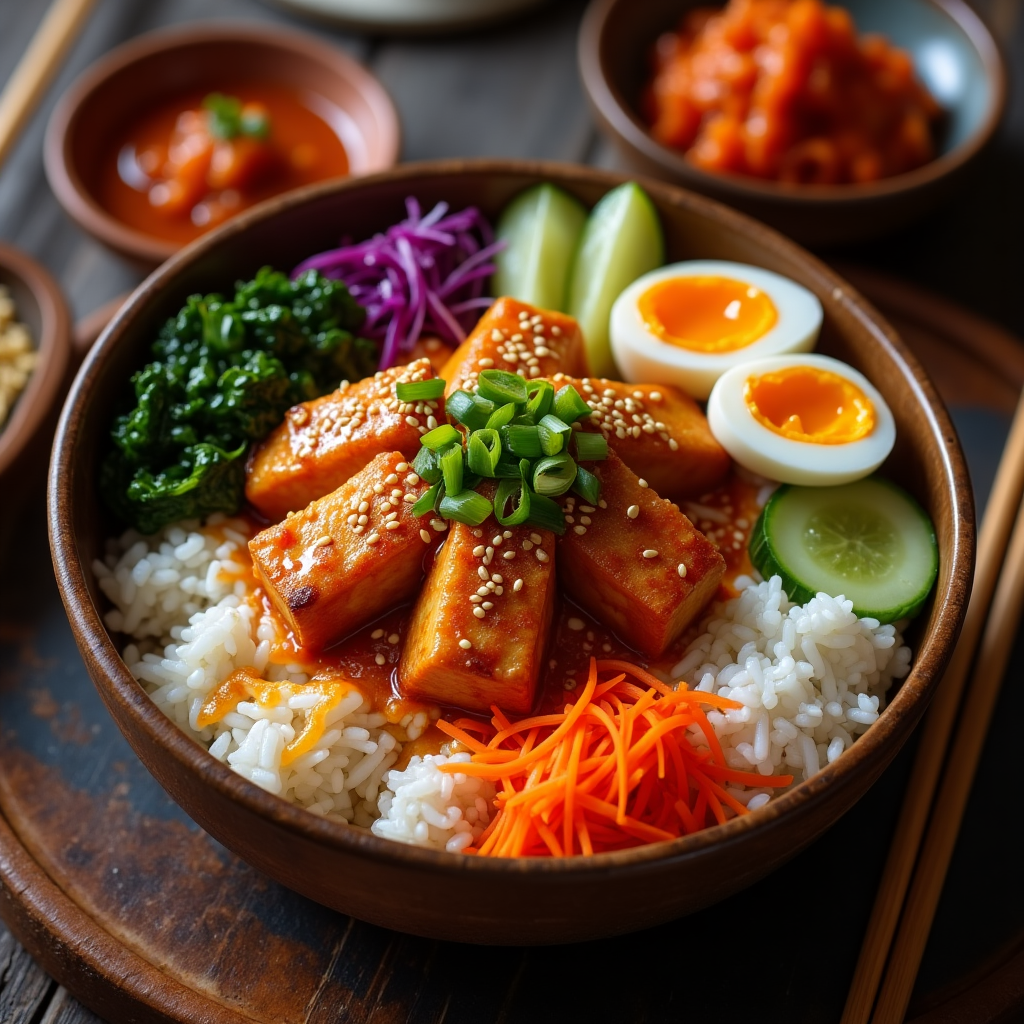
Ingredients: How to press tofu for stir fry,Best way to cook crispy tofu?
For the Crispy Tofu:
- 1 block (14-16 oz) extra-firm or super-firm tofu, pressed and cubed into 3/4-inch pieces
- 1 tablespoon cornstarch (or arrowroot powder for a gluten-free option)
- 1 tablespoon neutral oil (like canola, vegetable, or avocado oil)
For the Mysterious Gochujang Sauce:
- 2 tablespoons gochujang (Korean chili paste)
- 1 tablespoon soy sauce (or tamari for gluten-free)
- 1 tablespoon rice vinegar
- 1 tablespoon maple syrup or brown sugar (adjust to your sweetness preference)
- 1 teaspoon sesame oil
- 2 cloves garlic, minced
- 1/2 inch fresh ginger, grated (about 1/2 teaspoon)
- 2-3 tablespoons water or vegetable broth (to adjust consistency)
Instructions: How to make Gochujang Sauce for Tofu?
- Press the Tofu: This is a crucial step for crispy tofu! Wrap the tofu block in a few layers of paper towels or a clean kitchen towel. Place it on a plate and put something heavy on top (like a cast-iron skillet or a few cookbooks). Let it press for at least 15-20 minutes, or even longer if you have time. The more water you press out, the crispier your tofu will be.
- Prepare the Tofu: Once pressed, cut the tofu into 3/4-inch cubes. In a medium bowl, toss the tofu cubes with cornstarch until evenly coated. This creates a thin, crispy crust when cooked.
- Make the Gochujang Sauce: In a small bowl, whisk together the gochujang, soy sauce, rice vinegar, maple syrup (or brown sugar), sesame oil, minced garlic, grated ginger, and 2 tablespoons of water or vegetable broth. Taste and adjust sweetness or spiciness to your liking. If the sauce is too thick, add the remaining tablespoon of water/broth.
- Cook the Tofu: Heat the neutral oil in a large non-stick skillet or wok over medium-high heat. Once hot, add the cornstarch-coated tofu in a single layer. Cook for 5-7 minutes, flipping occasionally, until golden brown and crispy on all sides. Remove the cooked tofu from the skillet and set aside.
- Sauté Vegetables (Optional): If you’re using vegetables that require cooking (like broccoli or bell peppers), add them to the same skillet after removing the tofu. Sauté for 3-5 minutes until tender-crisp. You can add a splash of water to help them steam if needed.
- Combine Tofu and Sauce: Reduce the heat to low. Pour the prepared gochujang sauce into the skillet. Bring to a gentle simmer, stirring constantly, until the sauce thickens slightly (about 1 minute). Add the cooked crispy tofu back into the skillet and toss gently to coat all the tofu pieces evenly with the delicious gochujang sauce.
- Assemble Your Bowls: Divide cooked rice among serving bowls. Top with the saucy gochujang tofu and your desired cooked or fresh vegetables. Garnish with toasted sesame seeds, sliced green onions, and a dollop of kimchi if desired.
- Serve and Enjoy! Dig into your incredibly flavorful and satisfying Spicy Korean Gochujang Tofu Bowl!
For Serving (Suggestions):
- Cooked rice (white, brown, or cauliflower rice for a low-carb option)
- Steamed or stir-fried vegetables:
- Broccoli florets
- Bell peppers (sliced)
- Carrots (julienned)
- Edamame
- Spinach or bok choy
- Vegetables that go well with Gochujang Tofu.
- Optional garnishes:
- Toasted sesame seeds
- Sliced green onions
- Kimchi (for an extra fermented kick!)
- Fresh cilantro
Expert Tips for the Easy Vegan Korean Gochujang Tofu Bowls :
- Don’t Skip Pressing the Tofu: Seriously, it makes all the difference for texture.
- Adjust Spice Level: Gochujang can range in heat. Start with less if you’re sensitive to spice and add more to taste. You can also add a pinch of red pepper flakes for extra heat.
- Customize Your Veggies: This recipe is super versatile! Use whatever vegetables you have on hand or prefer.
- Batch Cook Rice: Make a larger batch of rice at the beginning of the week for quick meal assembly.
- Meal Prep Magic: Cook the tofu and sauce, and chop your veggies ahead of time. Store separately and assemble just before serving.
FAQs
Q1: Is this Tofu Bowl recipe vegan ?
A1: Yes, this recipe is naturally vegan, assuming you use maple syrup and vegetable broth. It’s a fantastic plant-based meal!
Q2: Can I make this recipe gluten-free ?
A2: Absolutely! Use tamari instead of soy sauce and ensure your gochujang is certified gluten-free (most are, but always check the label). Use arrowroot powder instead of cornstarch.
Q3: How spicy is gochujang ?
A3: Gochujang has a moderate to high level of spiciness, but it’s well-balanced with sweetness and savory notes. You can adjust the amount in the sauce to suit your preference.
Q4: Can I use different proteins instead of tofu ?
A4: Yes! This gochujang sauce is incredibly versatile. It works wonderfully with chicken, shrimp, tempeh, or even hearty mushrooms. Adjust cooking times accordingly.
Q5: How do I store leftovers ?
A5: Store any leftover Spicy Korean Gochujang Tofu and vegetables in an airtight container in the refrigerator for up to 3-4 days. Reheat gently on the stovetop or in the microwave.
Q6: What are some other uses for gochujang ?
A6: Gochujang is a versatile ingredient! Use it in marinades for meats, dressings, dipping sauces, stews (like Kimchi Jjigae), and even in fusion dishes for a spicy kick.
Conclusion: Your Journey to Deliciousness Starts Here!
This Spicy Korean Gochujang Tofu Bowl is more than just a recipe; it’s a passport to incredible flavors and a testament to how delicious and satisfying plant-based meals can be. Whether you’re a tofu connoisseur or new to Korean cuisine, this dish is sure to become a regular in your rotation.Now, let’s talk about what gochujang does for your digestion. This is where things get really interesting.
Healthy Butter Chicken (Low-Oil, No Cream)
Easy Teriyaki Salmon Bowl Recipe (Under $10)
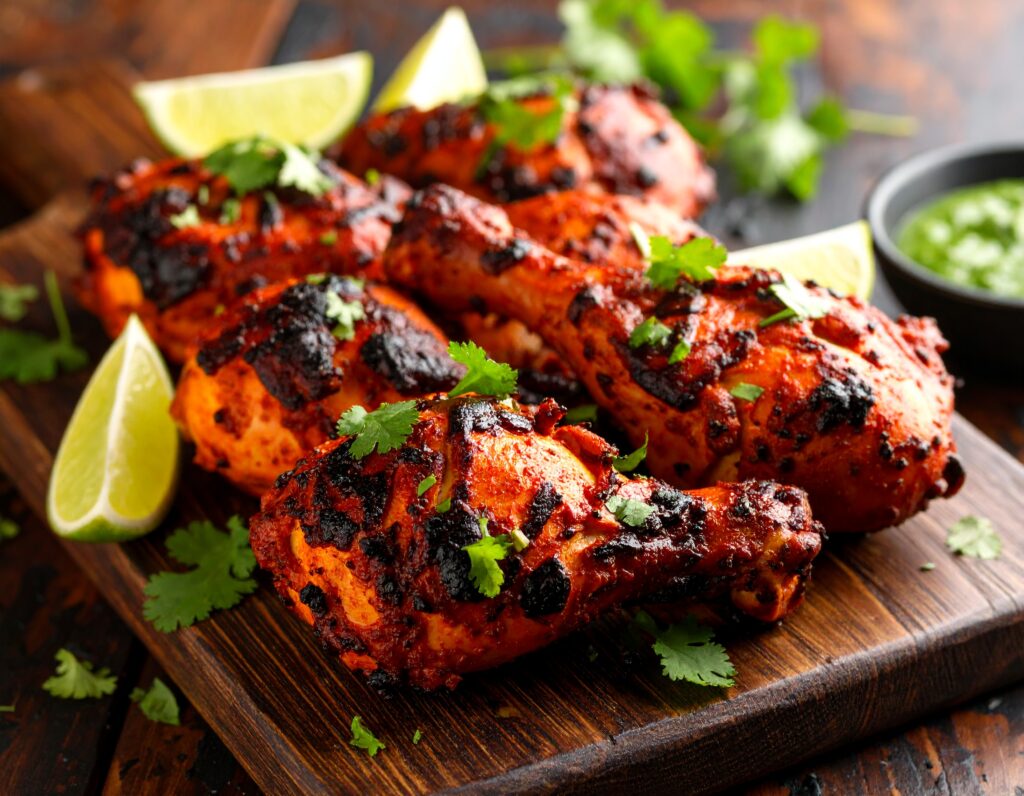
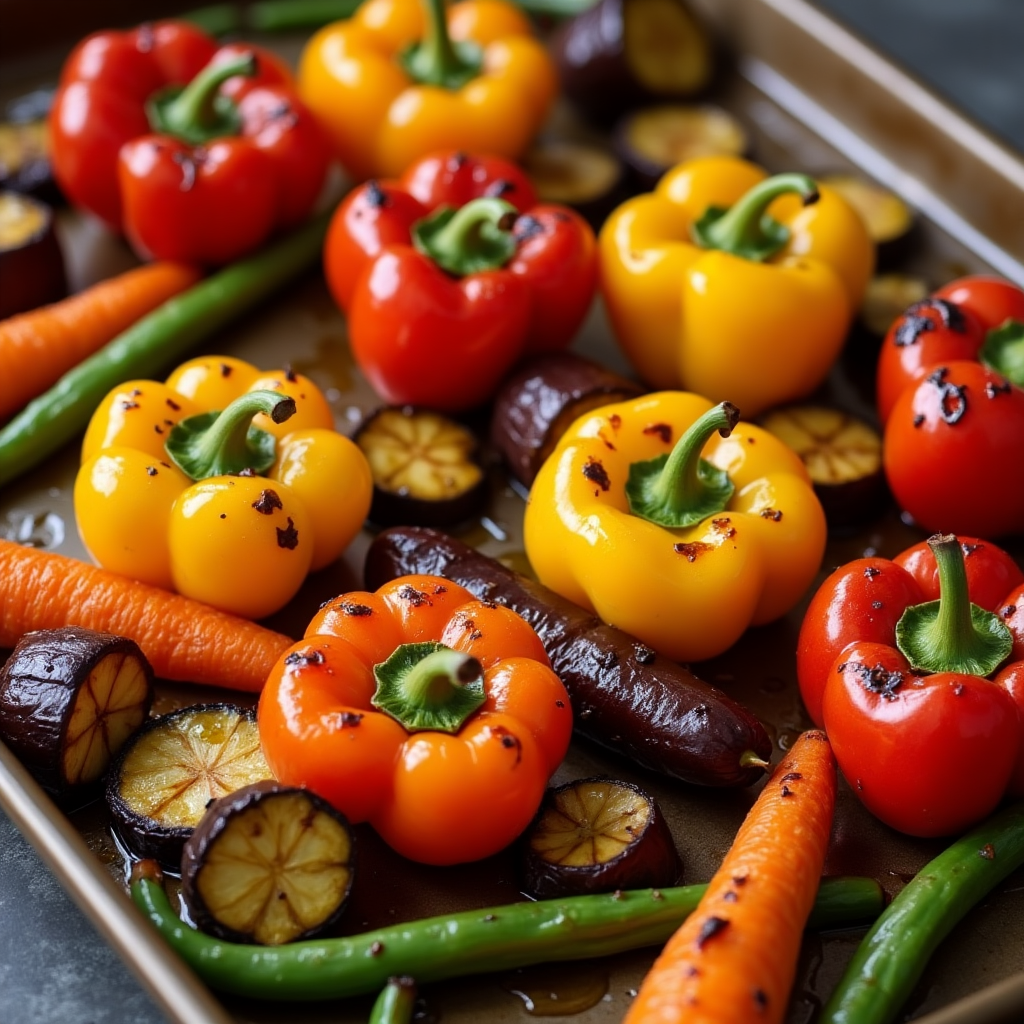

Quick Teriyaki Salmon Rice Bowl | Meal Prep in 30 Minutes
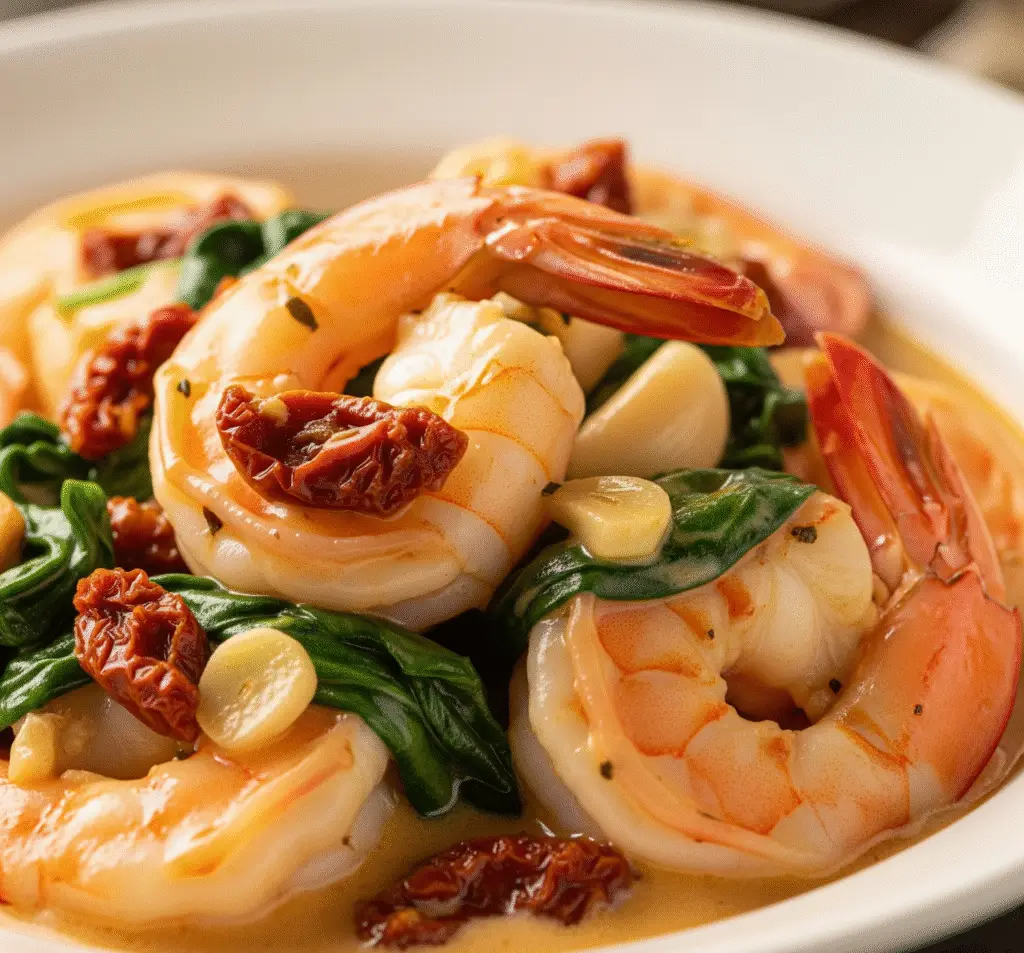


Proudly powered by WordPress



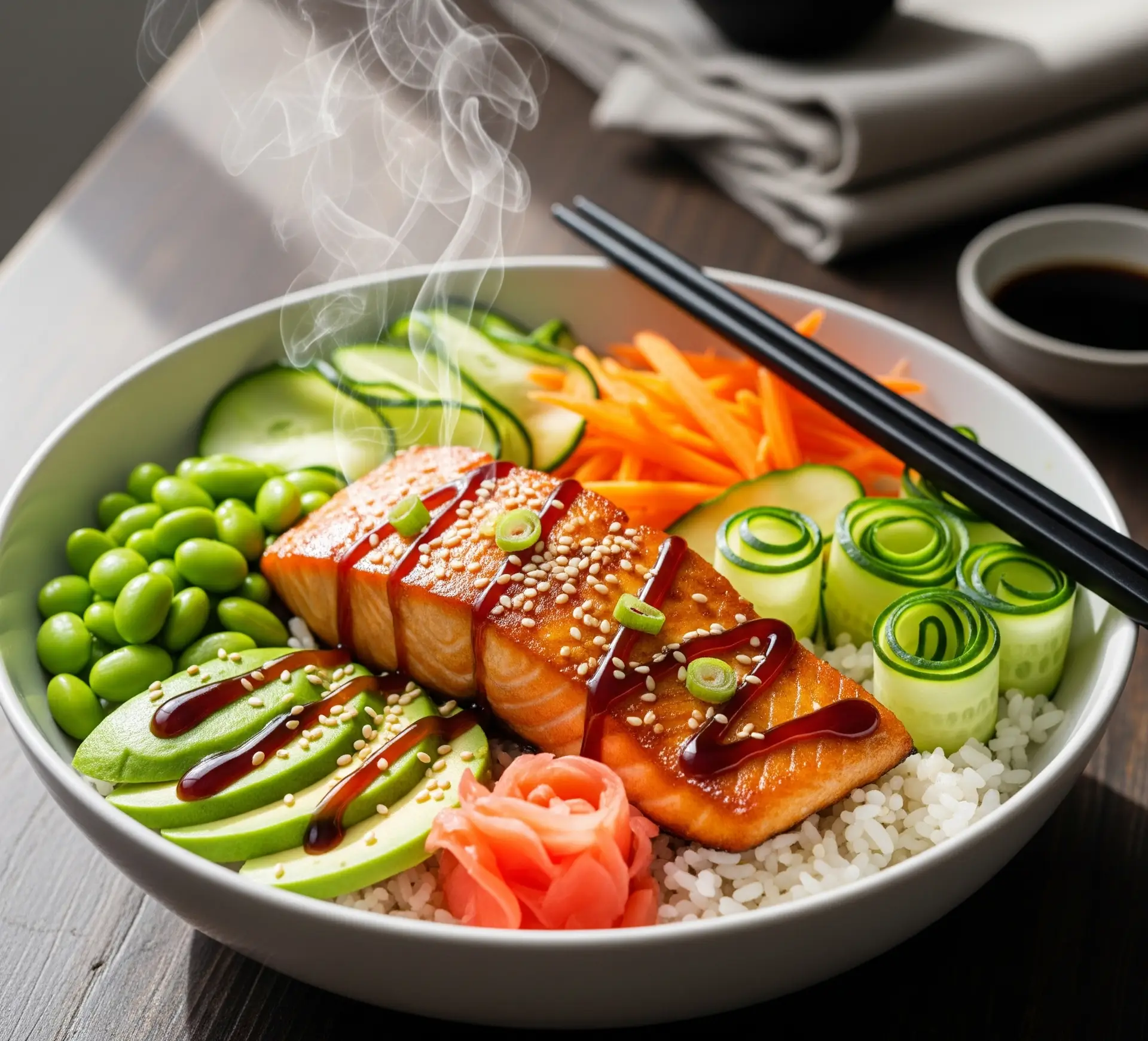
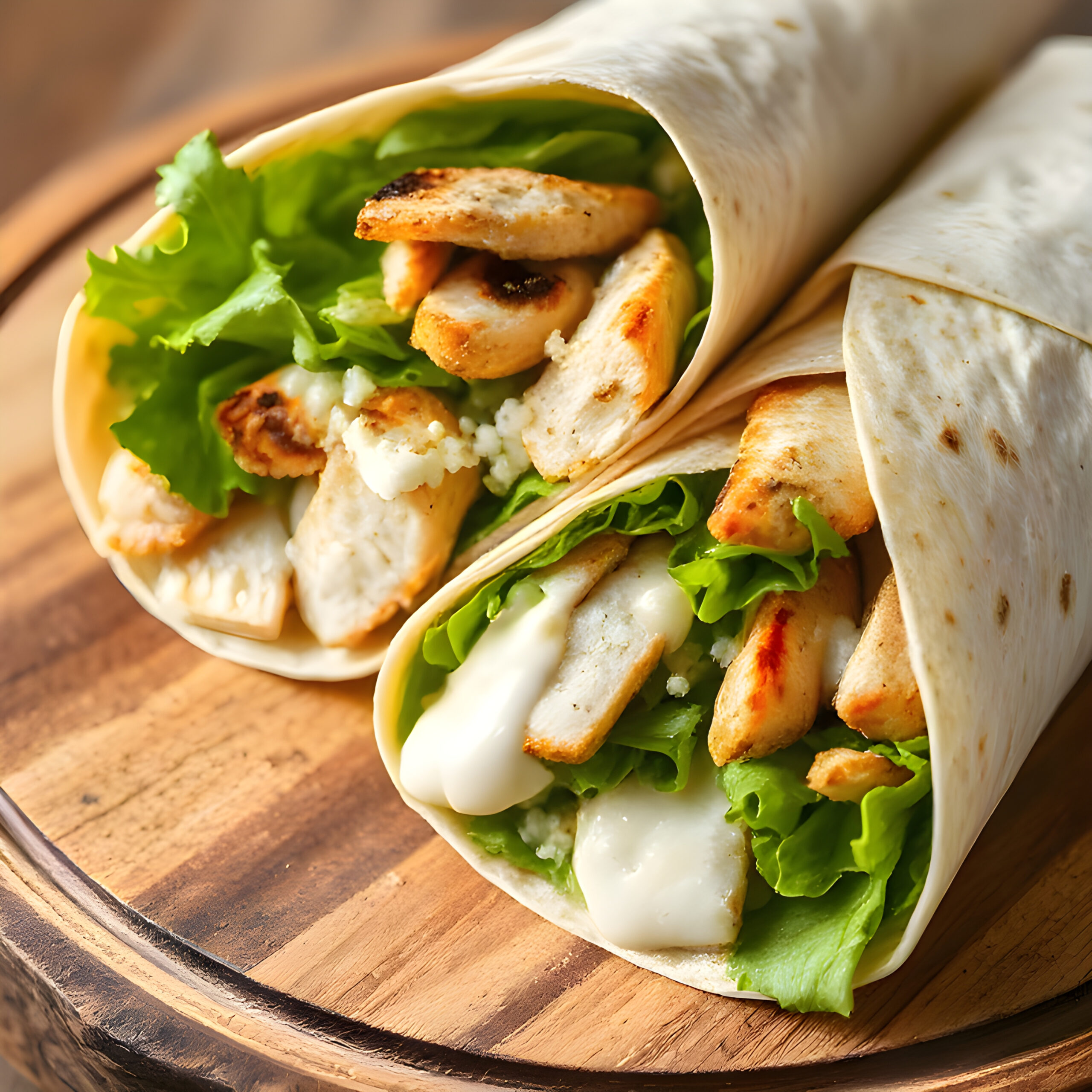
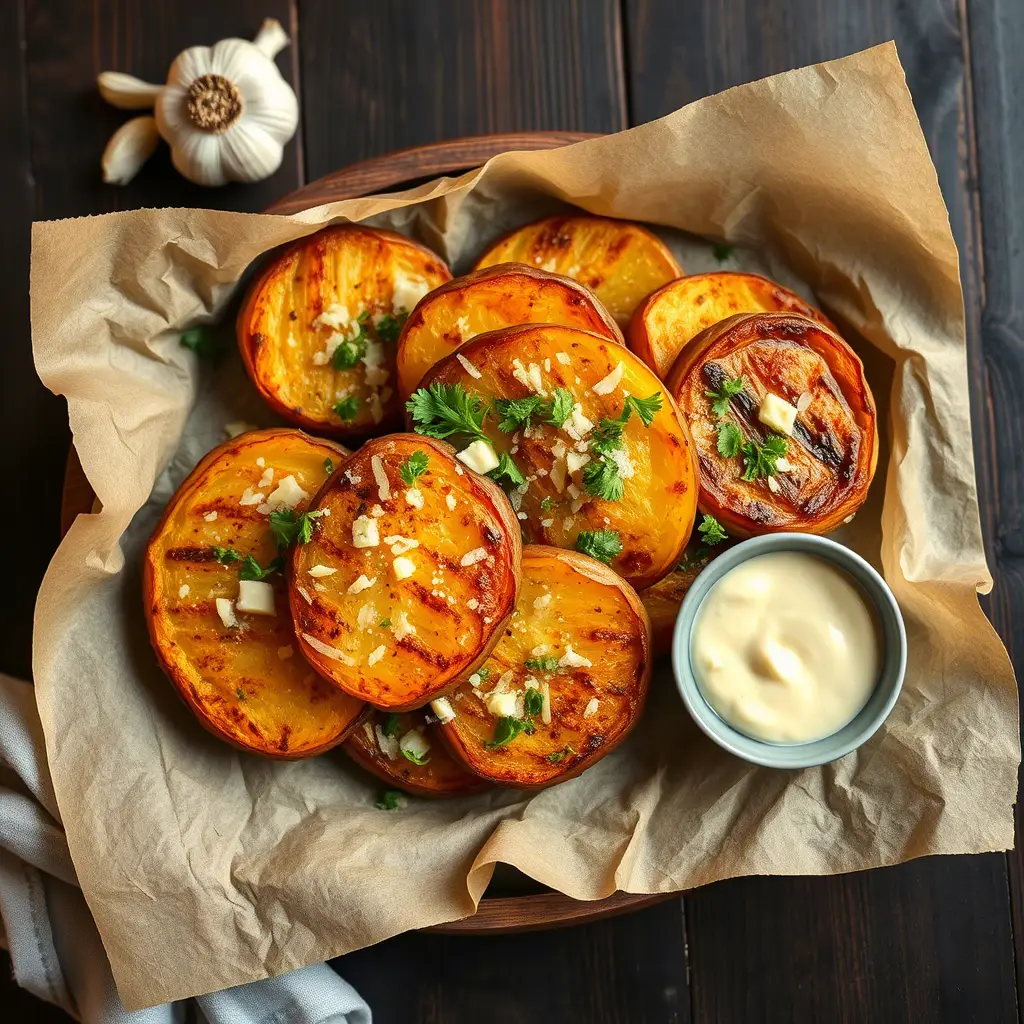
[…] Tofu […]
[…] […]